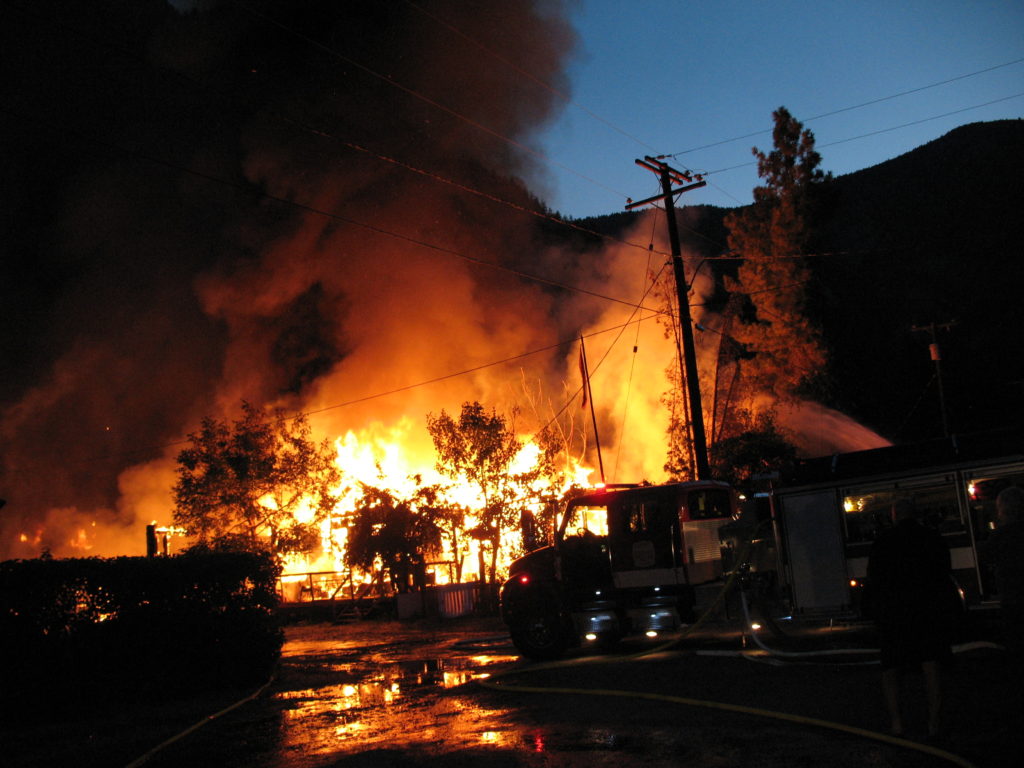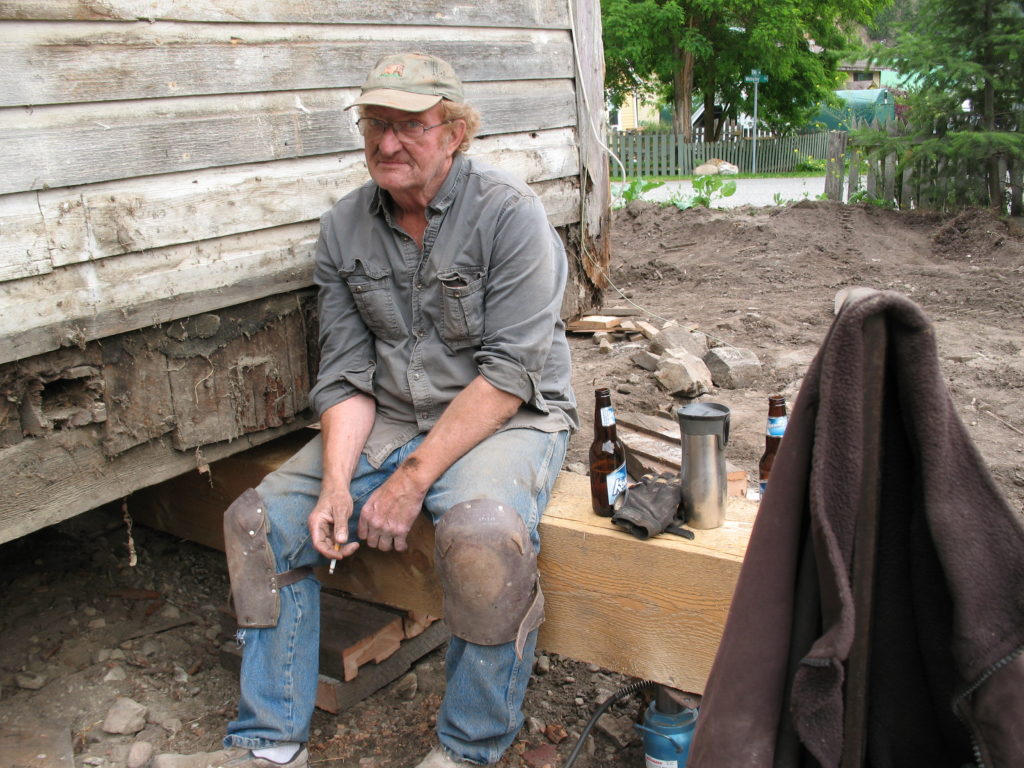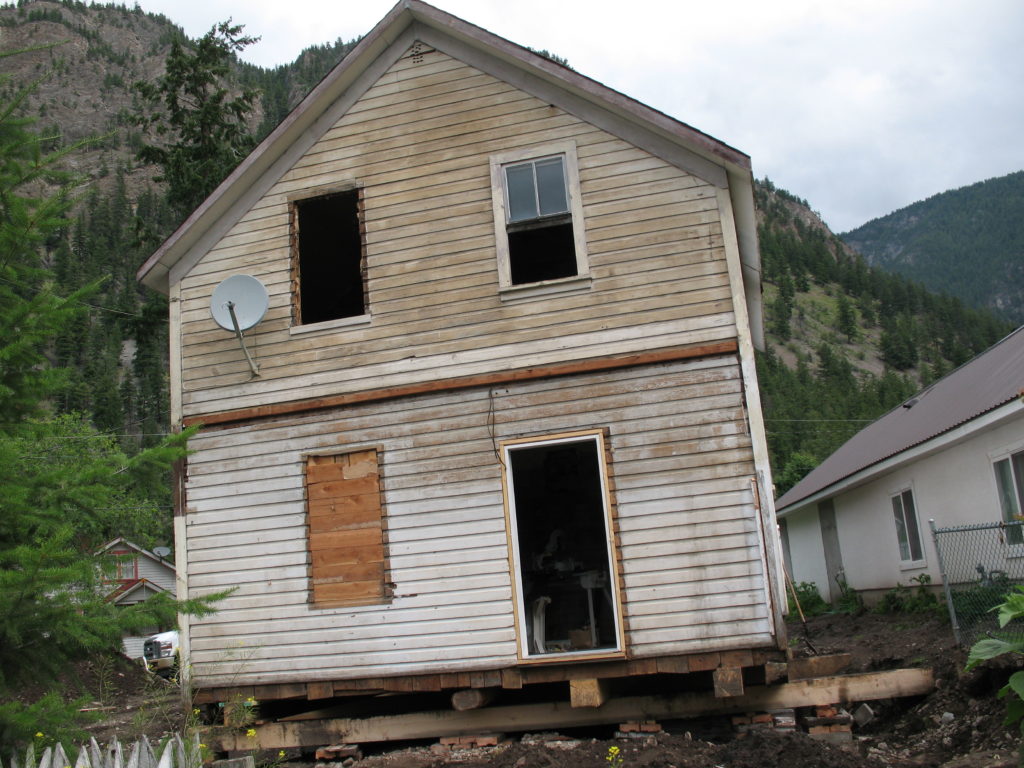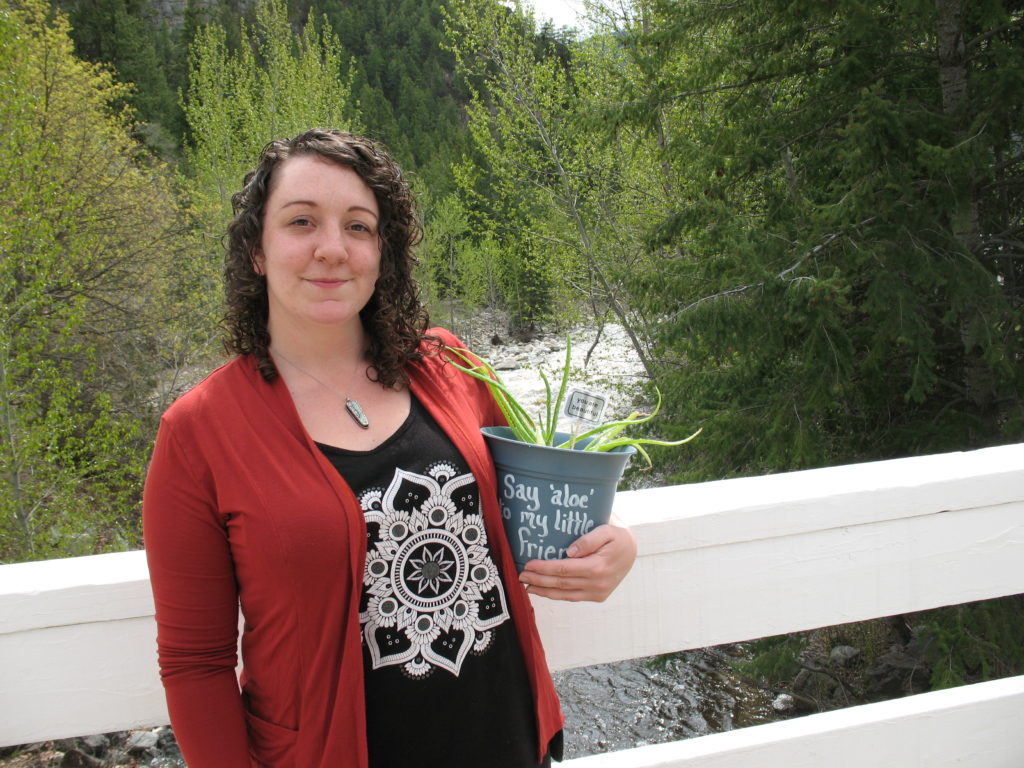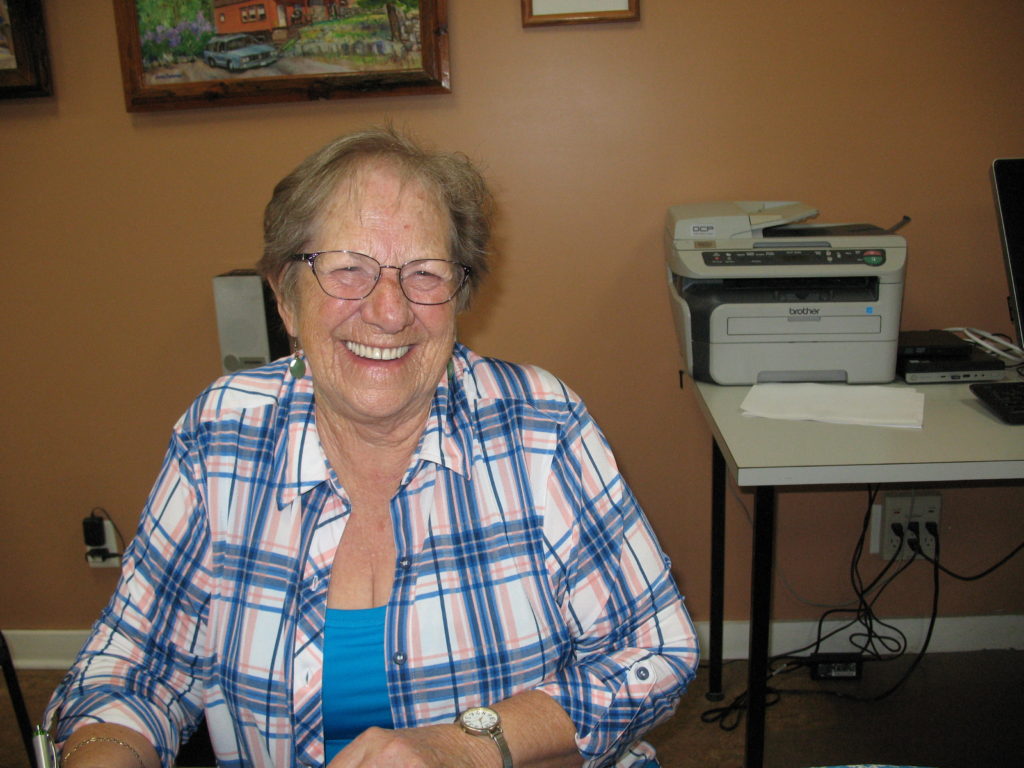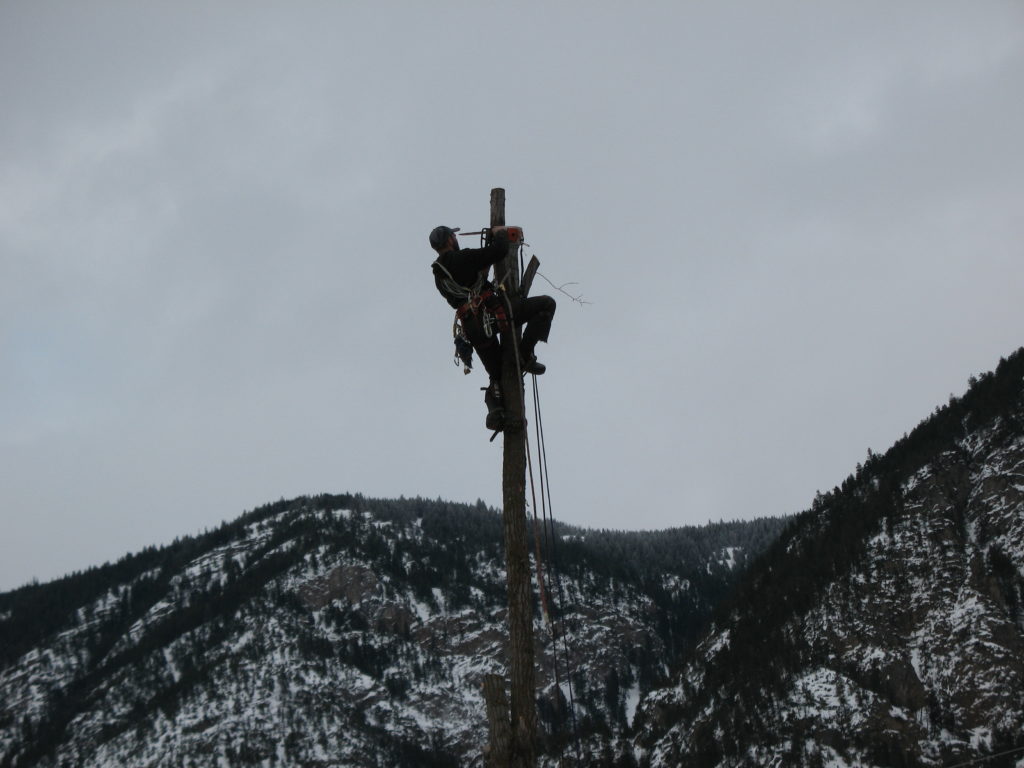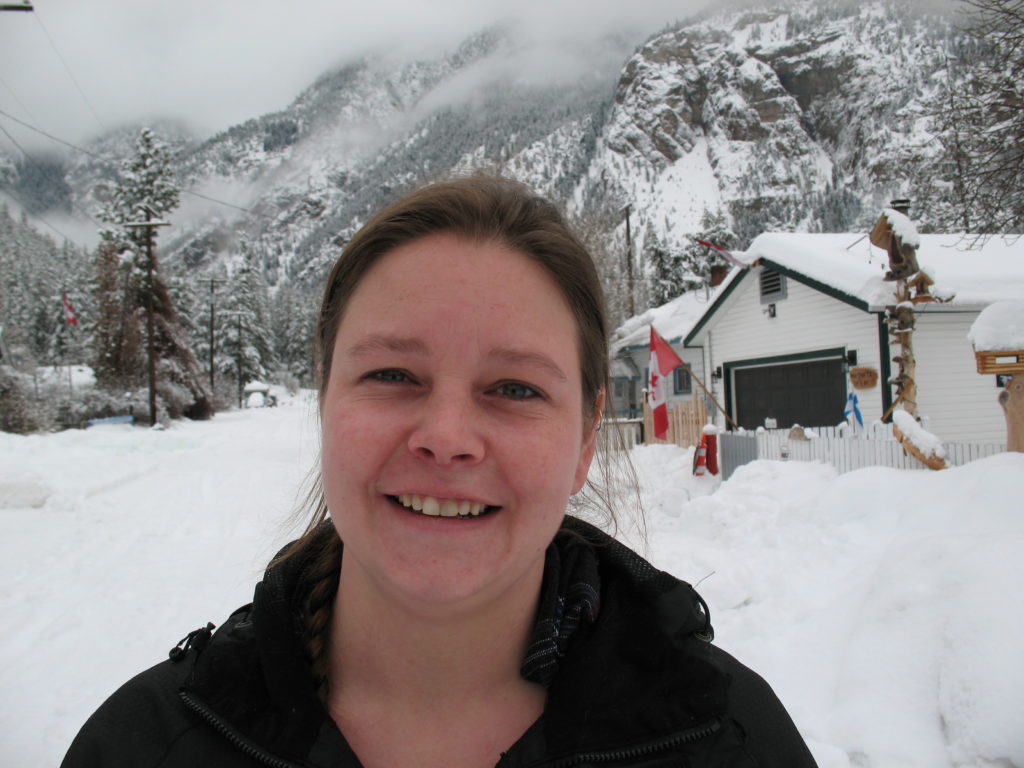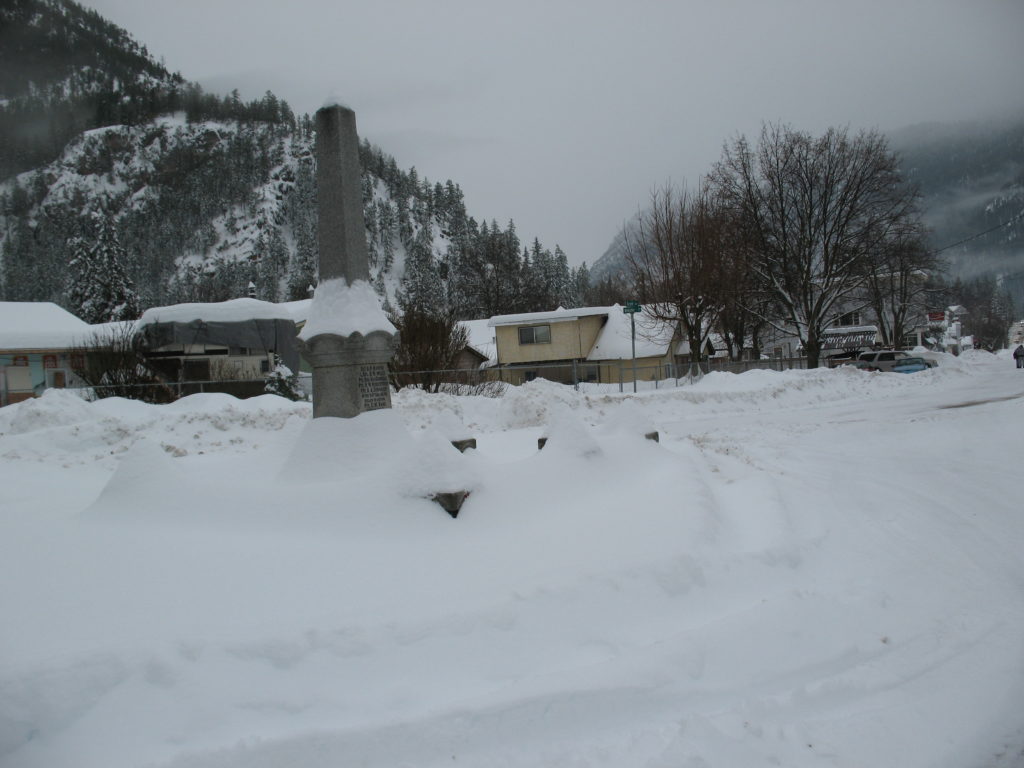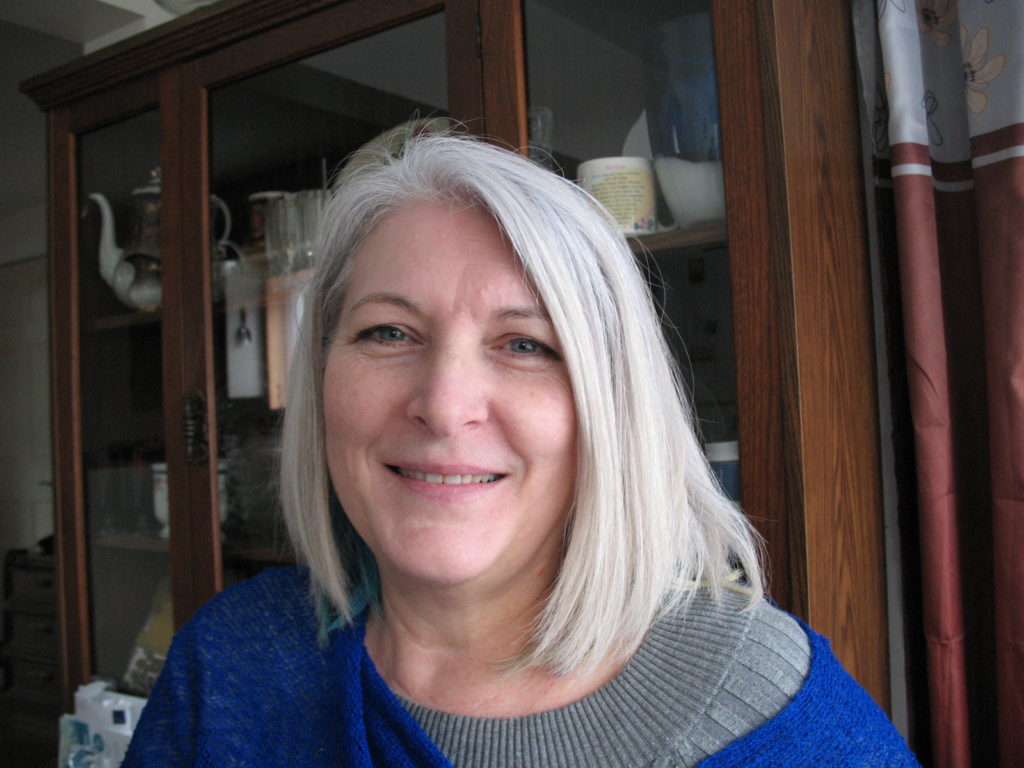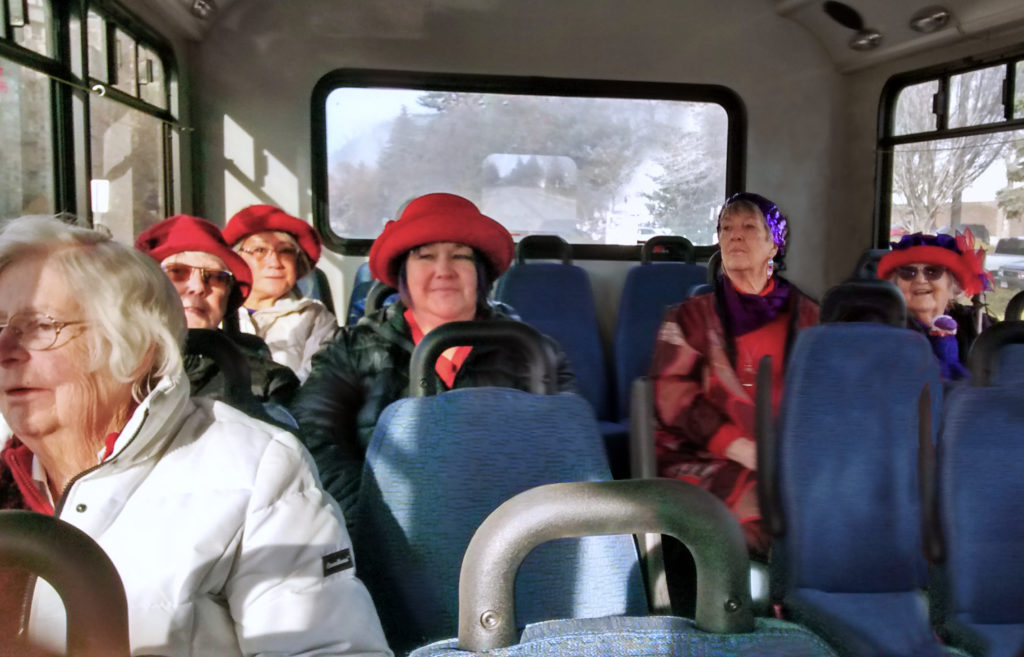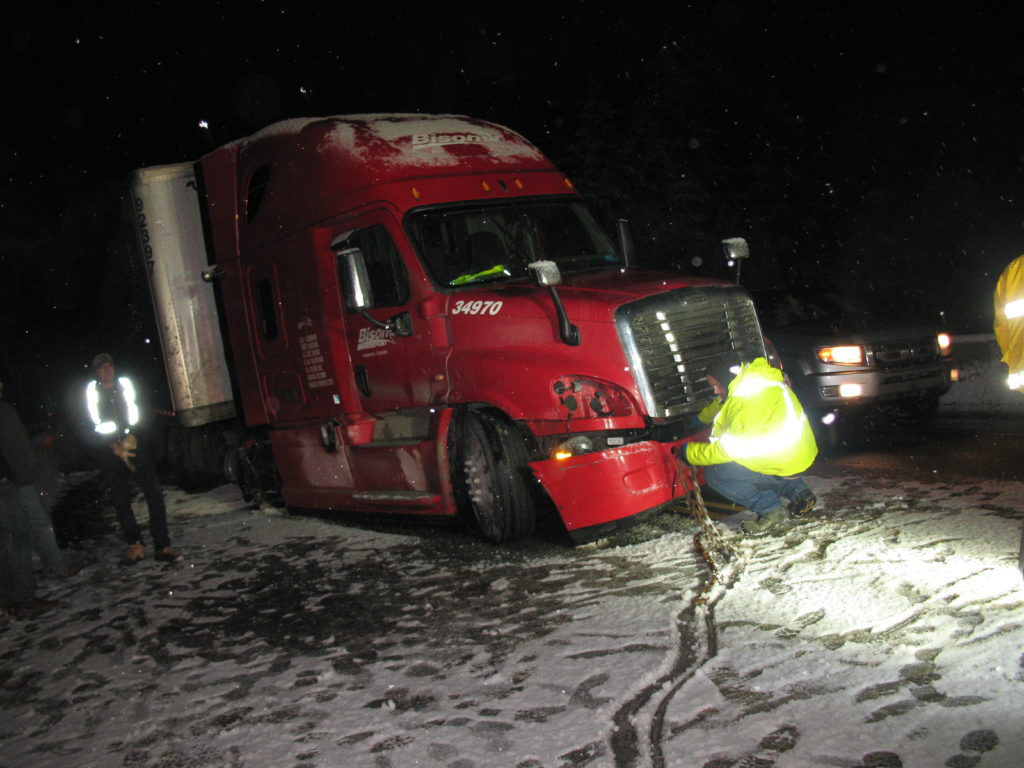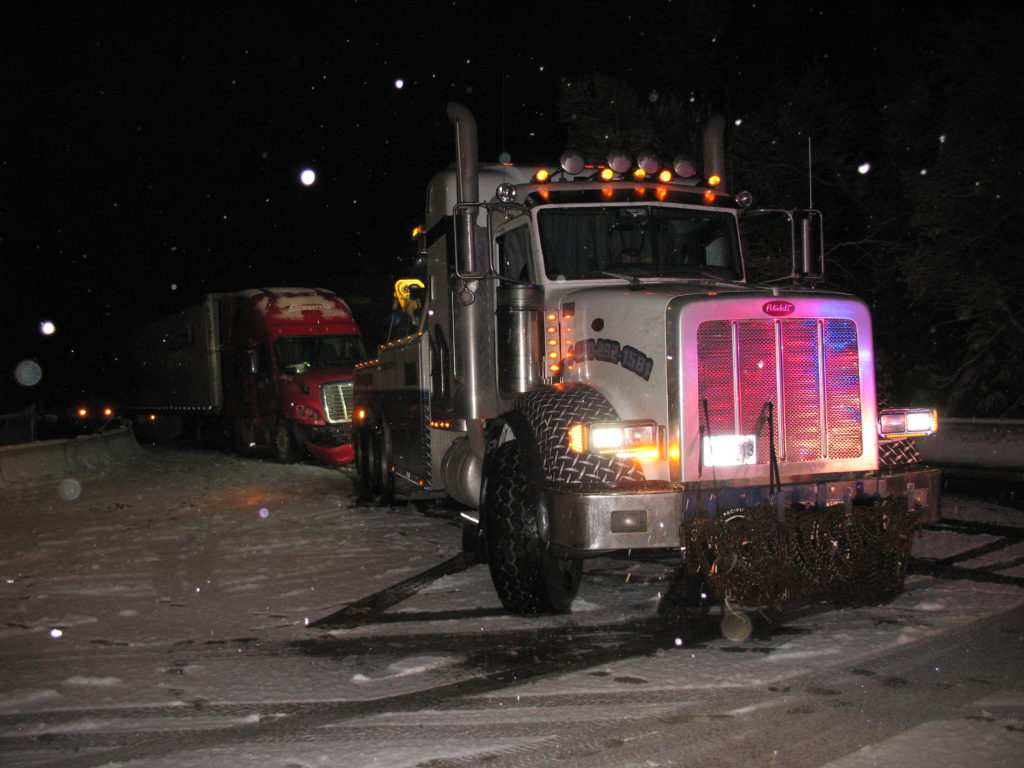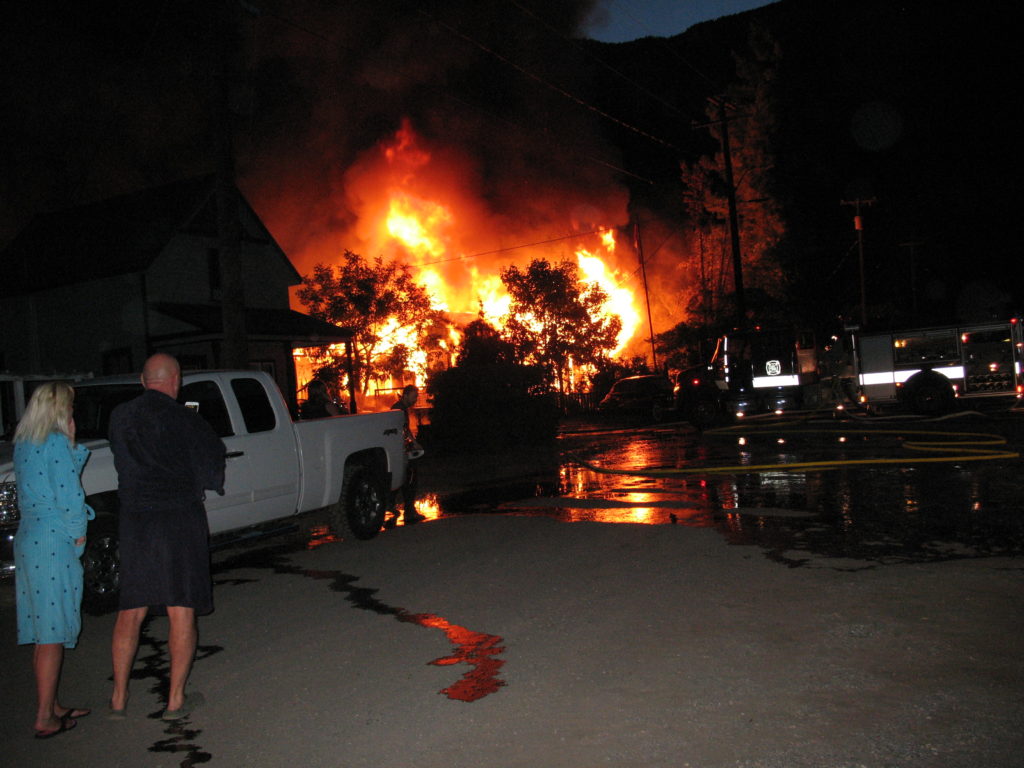
Hedley citizens were awakened by fire sirens & explosions.
Citizens of Hedley were awakened shortly before 4:30 Sunday morning by fire truck sirens and loud explosions. Fire sirens are rarely heard here except on Tuesday evenings when firefighters gather for practise. On this occasion it was for real. Hedley firefighters arrived on the scene within minutes but the fire had spread rapidly and a large 2 story home at the corner of Kingston and First St. was already completely engulfed in flames. (According to the Hedley Museum archivist, it was a heritage building, constructed in 1905 or 1906).
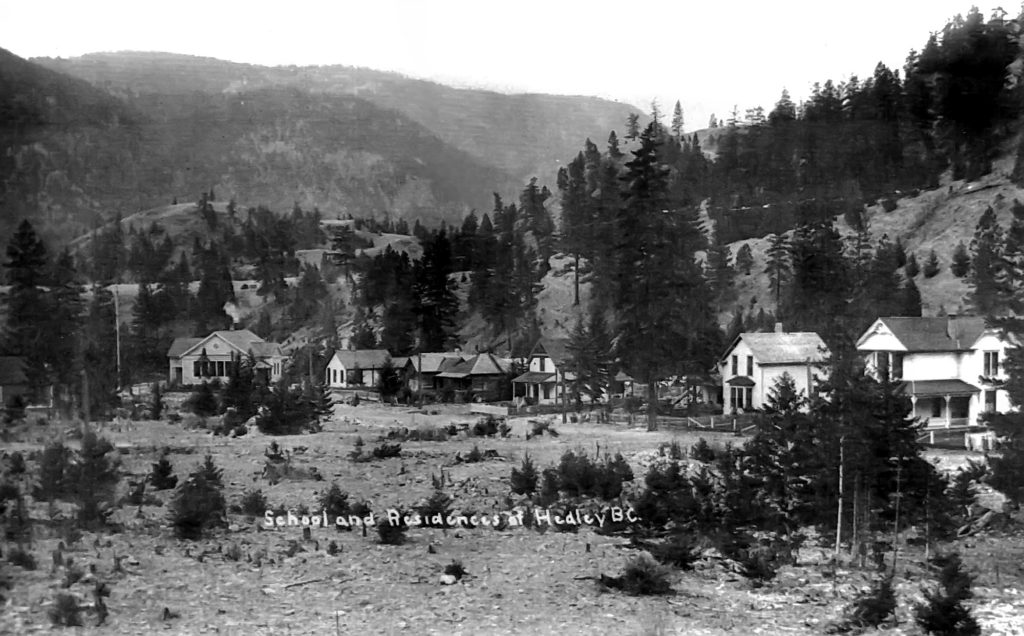
An ominous, massive black plume was rising straight up hundreds of metres. Because the structure was at the edge of town and there was concern trees on the mountainside would catch fire, emphasis was on preventing this and also protecting nearby homes. Several trees at the base of the mountain “candled”, according to a firefighter. Keremeos Fire Department arrived to assist.
It was speculated by an onlooker that the fire started behind the home and that the popping sounds had come from propane cannisters. Later in the morning, during the mopping up stage, Assistant Fire Chief Doug Nimchuk said the cause of the fire is not yet known.
For many years people in Hedley have expressed concern that a fire in town might spark a forest fire and endanger the entire community. In the Sunday morning fire the home was completely destroyed but the diligence and rigorous training of firefighters prevented the blaze from spreading up the mountainside or to nearby structures.
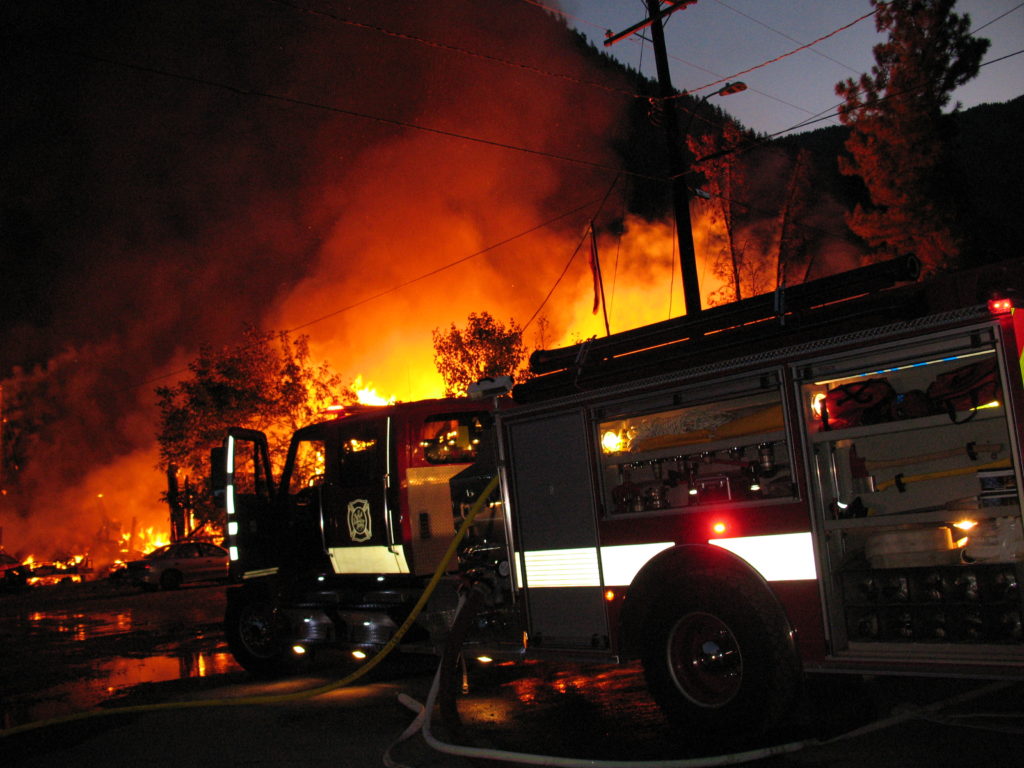
On a Go Fund Me page Savannah Fitch states, “My mother managed to get everyone out of the house in time which included 2 little girls, my 70 year old disabled grandfather and his wife, my mother, 2 dogs, 7 brand new kittens, and the adult mom cat.” The flames were spreading rapidly and they had to leave behind all possessions, including clothes and shoes. Assistance was provided by the Animal Lifeline Emergency Response Team from Penticton and Princeton Emergency Support Services.
Later Sunday morning police secured the scene with crime tape, and a firefighter said an investigation team is on the way. She said it is considered a “crime scene.”
